#southern California railway museum
Explore tagged Tumblr posts
Text


Not Brady yet but I visited the southern California railway museum and got to ring the bell of Chloe! My mom was a bit more excited than I was because Chloe was one of the two engines owned by Ward Kimball, one of the original nine animators for Walt Disney .
I decided to give the girl a face cause I loved her so damn much! I got a few other pictures from the museum, including Emma Nevada, the other engine of Ward Kimball and is still in restoration. But I don't think I'll post them any time soon cause they have my face
7 notes
·
View notes
Text
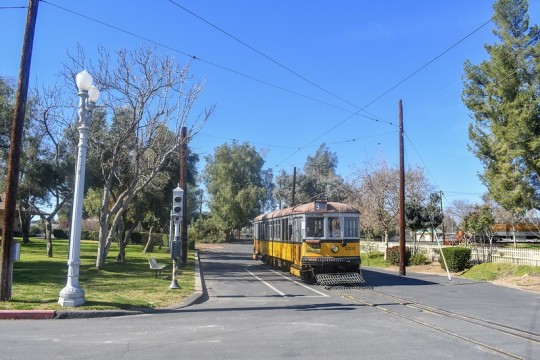
Trolley stop
#Trolley car#street car#Los Angeles Railway#museum exhibit#Southern California Railway Museum#perris#riverside county#california#photo#digital#original photographers
20 notes
·
View notes
Video
#black and white#southern california railway museum#perris#nature#grass#blooms#seeds#breeze#soft#fuzzy#bunny tails#meadow#plant#detail#flickr
20 notes
·
View notes
Video
Take 'er back! por Kevin Madore Por Flickr: At the end of a day of public train rides at the Laws Museum near Bishop, California, the crew of Southern Pacific Locomotive #18 has uncoupled their locomotive from the train and run the engine out to the south end of the yard. With a brakeman positioned to protect the rear of the locomotive, it will shortly back to the engine shed on the museum property, where it will spend the night. This image was captured in March of 2023 at the Laws Museum, during a special visit by SP #18 from the Carson & Colorado Railway.
37 notes
·
View notes
Text
TRAINSPOTTING!
Lucy and Railway Transportation
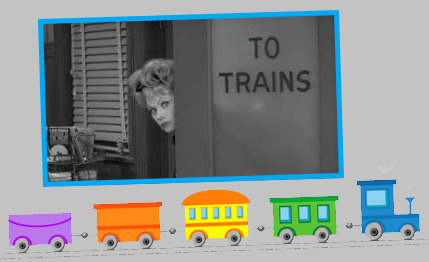
Before America was ruled by the automobile, train transportation was the way to go. Lucy makes tracks for the railroad in these unforgettable moments on the (laugh) tracks.

As a young girl, Lucy would take the train from Jamestown to New York City, hoping to fulfill her dreams of becoming a performer. The train station is now part of the National Comedy Museum.
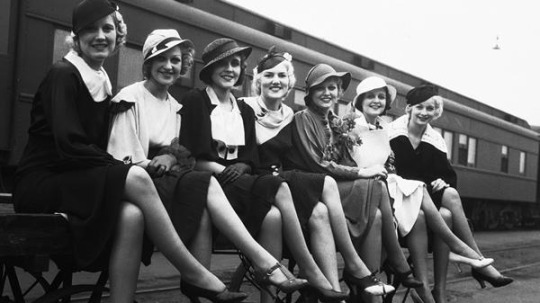
1933 ~ Lucille Ball joined the Goldwyn Girls on a train headed west to Tinseltown. Left to right are Katherine Mauk,Rosalie Fromson, Mary Lange, Vivian Keefer, Barbara Pepper, Theo Phane, and Lucille Ball.
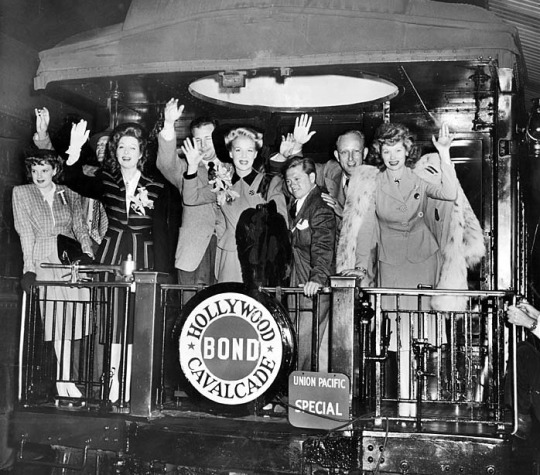
1943 ~ Lucille Ball and other well-known stars set out on a Union Pacific special train to cross America promoting the sale of War Bonds. It began in Washington DC and went through 16 American cities before ending in San Francisco 21 days later.
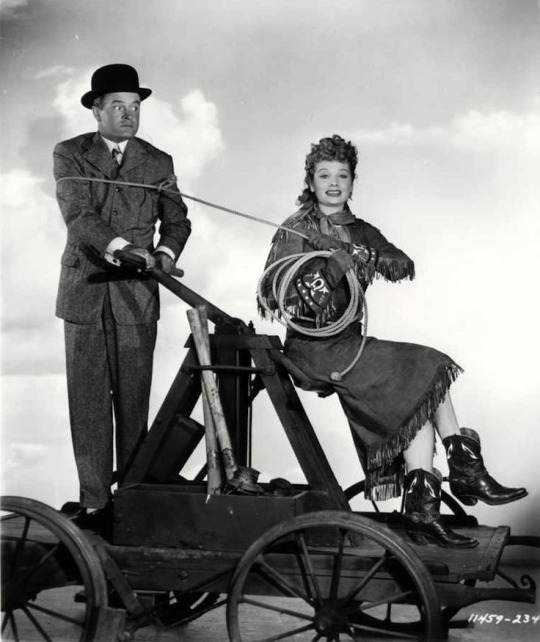
Fancy Pants (1950) ~ Lucille Ball and Bob Hope pose atop a railroad handcar.
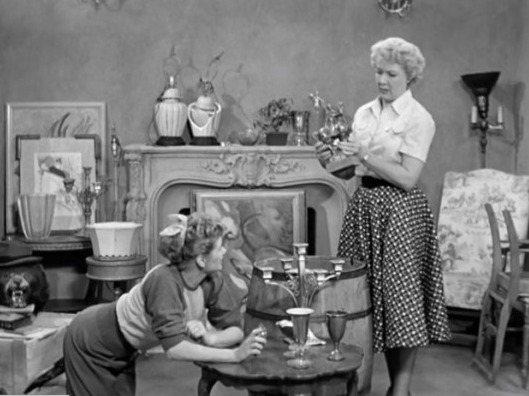
“New Neighbors” (1952) ~ When Ethel is looking through the O’Brien’s belongings, she holds up a bronze of a man on horseback. She deems it “early Pullman.” Pullman refers to railroad sleeping cars that were built and operated by the Pullman Company from 1867 to 1968. The cars were often decorated with inexpensive items that sometimes found their way into travelers’ suitcases!
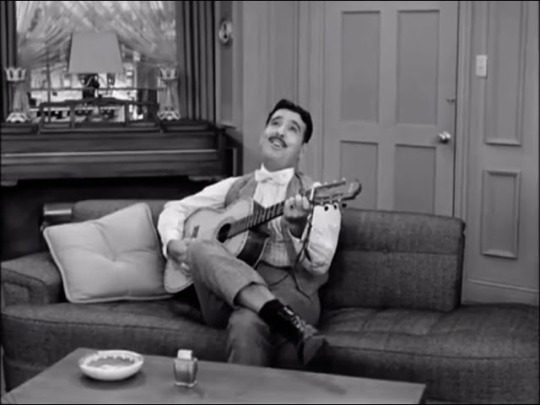
“Tennessee Ernie Visits” & “Tennessee Ernie Hangs On” (1954) ~ Ford sings the train-themed song "The Wabash Cannonball” waking Lucy and Ricky from a sound sleep, and then again just before Lucy enters as the 'wicked city woman.' The song’s first documented appearance was on sheet music published in 1882, titled “The Great Rock Island Route” and credited to J.A. Roff. A revised version was made famous by Roy Acuff in 1936.
Listen to the jingle, the rumble and the roar As she glides along the woodland o'er the hills and by the shore. Hear the mighty rush of the engine hear the lonesome hobo's call As you travel across the country on the Wabash Cannonball.

“Getting Ready” (1954) ~ Thinking about how to get to Hollywood, Lucy considers the train. The brochure Lucy reads has the Union Pacific Railroad’s logo redacted. In reality, the Union Pacific did not operate East of the Mississippi, betraying the show’s Southern California roots!
LUCY (to Ricky): You know, on the train, you can see the country you're passing through. This is little Ricky's first chance to go across the United States, so don't you think you ought to get a chance to really see it?
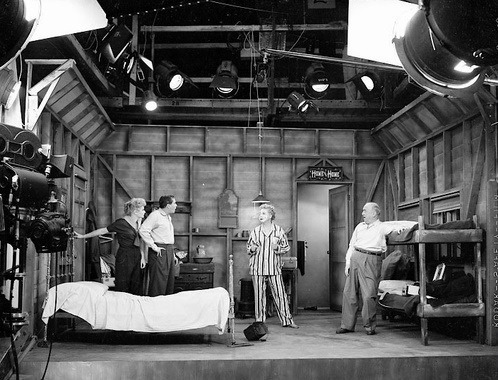
“First Stop” (1955) ~ On their cross-country road trip, the gang takes refuge at One Oak Cafe and Cabins. Their rundown cabin is near an unseen (but loudly heard) railroad - which causes the entire building to shake!

“Ricky Sells The Car” (1955) ~ In this episode we learn that the gang will return to NYC by train on the Union Pacific Railroad’s new Domeliner service on the City of Los Angeles train. A rift develops between the Ricardos and Mertzes when there aren’t enough tickets in the same class. Don Brodie plays the Union Pacific Railroad clerk.
Before he entered show business, William Frawley (Fred Mertz) worked as a stenographer for the Union Pacific Railroad.
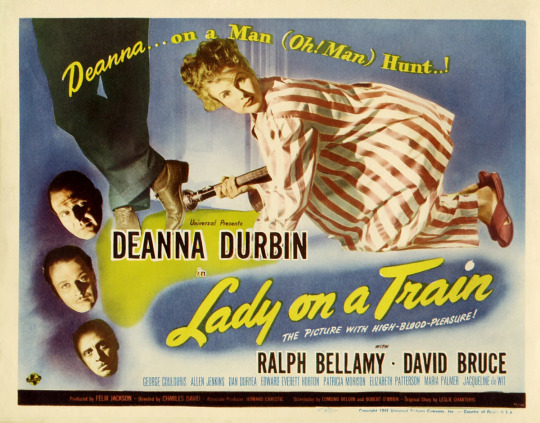
Frawley was featured in the 1945 Deanna Durbin film Lady on a Train. The Universal release also featured future “I Love Lucy” cast members Elizabeth Patterson (Mrs. Trumbull), Edward Everett Horton (Mr. Ritter), Allen Jenkins, Fred Aldrich, Joseph Crehan, Mike Lally, Sam Harris, and Sam McDaniel, who played a train porter, just as he would in...
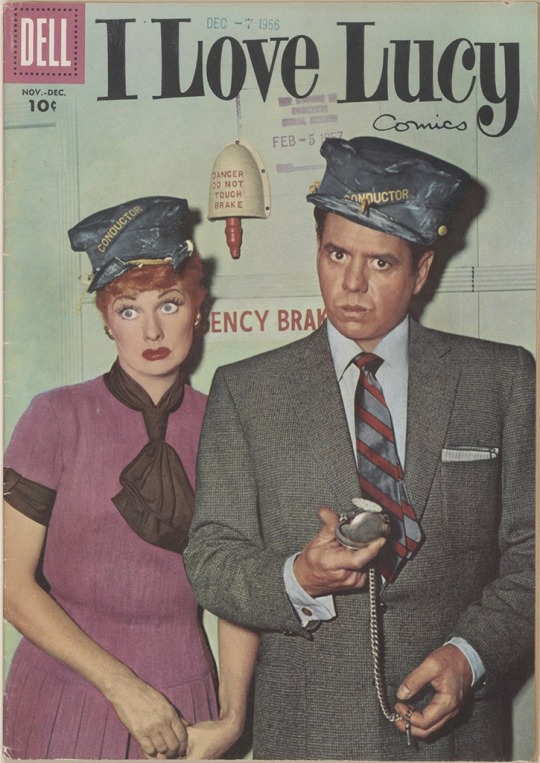
“The Great Train Robbery” (1955) ~ Returning from Hollywood to New York, Lucy wreaks havoc on the City of Los Angeles train.

As set up in the previous episode, Desilu had a partnership with Union Pacific Railroad. The line operated the City of Los Angeles train from 1936 to 1971, when Amtrak took over national train service in the USA. Although it is not mentioned, the train route terminated in Chicago, where, presumably, the foursome got a connecting train to New York City, perhaps the famed 20th Century Limited.
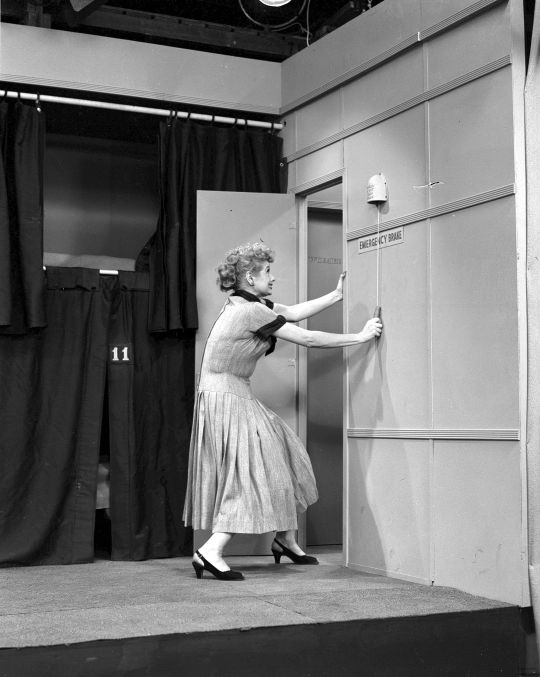
To simulate the emergency braking of a speeding train, Desi wanted more than just actors reacting to a jolting camera, so sets were built on a spring mechanism that was triggered by the emergency brake itself. When Lucy pulled the handle, it caused the entire set to lurch forward in a sudden movement. All this is demonstrated in the special features section of the DVD release.

As part of the partnership with UPR, Desilu was granted permission to film aboard the real Domeliner train. As there was a nearby train station, Vivian Vance, William Frawley, Kathryn Card, Frank Nelson (the conductor) and Sam McDaniel (the porter) were all featured in the location footage on the platform and doubles were not used. Lucille Ball and Desi Arnaz, however, do not appear in any of the second unit location footage. This is the only time principal cast members (instead of doubles) went on location during the half-hour series.
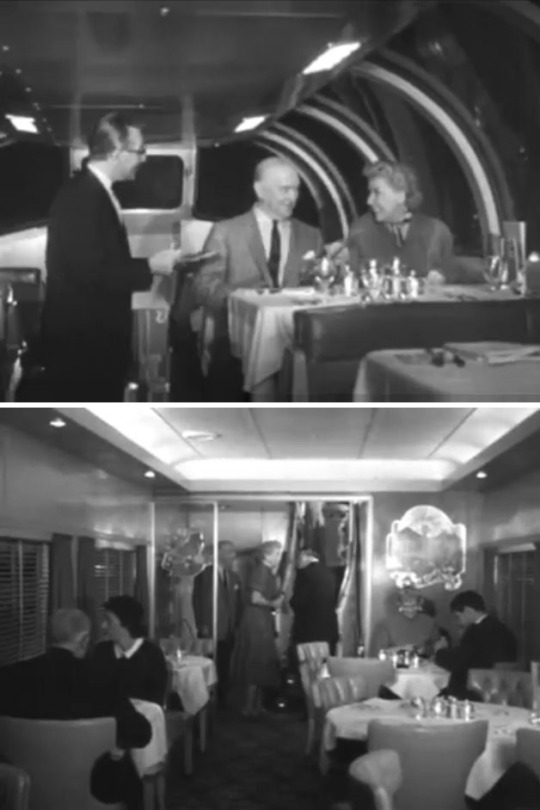
Footage of Fred and Ethel enjoying the Domeliner’s dining car and lounge were cut when it was realized that movement outside the window did not line up with the episode’s continuity. Rare 16mm film footage of the scenes was discovered and allowed the cut scenes to be added to the 2005 DVD release.

The lounge, however, was recreated on the soundstage. The short scene of the Mertzes boarding the train on the platform (complete with sound), assisted by the Porter and the Conductor, was still included in future syndicated broadcasts.

“Lucy’s Italian Movie” (1956) ~ Opens in a crowded train compartment headed to Rome. Here Lucy meets a film director and thinks this is her big break.

Band manager Fred failed to secure proper train acommodations for the overnight trip - forcing the gang into some unusual sleeping positions!
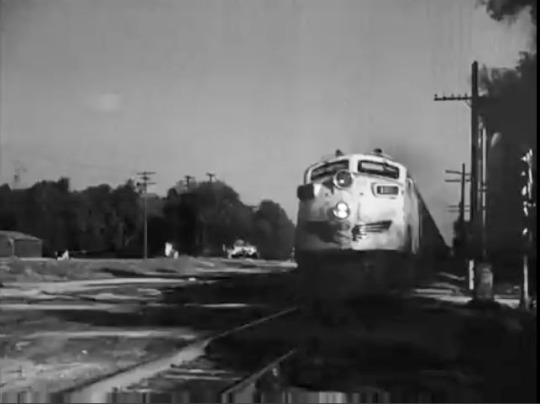
“Lucy Hunts Uranium” (1958) ~ The hour-long episode opens in a train car headed to Las Vegas, where Ricky's band is booked to perform at the Sands Hotel and Casino. Establishing footage indicates that they are traveling on the Union Pacific Railroad. In reality, getting to Las Vegas by train from Connecticut would have meant many transfers and route changes.

On the train they meet actor Fred MacMurray, who also gets uranium fever and races the Ricardos and Mertzes across the desert on a railroad handcar.

“Lucy Visits the White House” (1963) ~ Lucy and Viv accompany their scout troop to Washington DC on the train. The episode features establishing footage of an actual train and station.

The train makes stops in Greenview, Middlebrook, Flint Ridge, and Scottville. Like Danfield, all are fictional towns along a fictional railroad line.
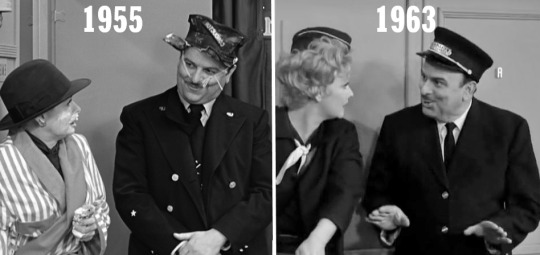
Frank Nelson reprises his role as the frazzled train conductor, first played in “The Great Train Robbery”.
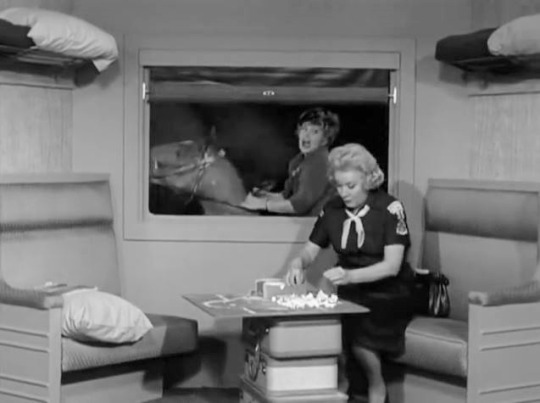
When Lucy misses the train, she tries to catch up on horseback. This sequence was shot on the soundstage using a mechanical horse. Coincidentally, an early literary name for a train was ‘iron horse’.
THE ‘FOREVER DARLING’ EXPRESS

Lucy and Desi board a special car provided by the Santa Fe Railroad to promote the film Forever Darling in early 1956.

The train was dubbed the “Forever Darling Special with stops in Chicago, Detroit, Dallas, Cleveland, Pittsburgh, Philadelphia, New York City, and Ball's hometown of Jamestown, New York.
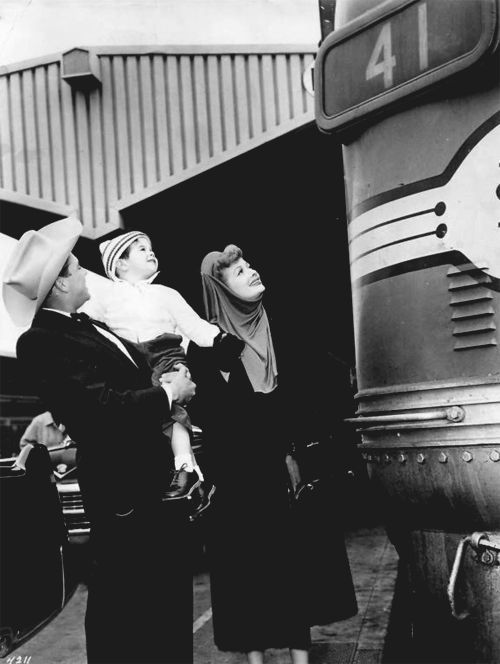
Back in Los Angeles, with Desi Jr., they admire the train that served them on their busy promotional tour. Desi is proudly wearing the cowboy hat he’d been given in Fort Worth.
TRAIN DEPOTS

“Off to Florida” (1956) ~ When Lucy misplaces their train tickets to Miami Beach, she and Ethel must share a car ride to Florida with Edna Grundy, a woman they suspect might be a hatchet murderess. At the end of the cross-fade between the second unit footage of the “North Miami” train station and the studio set of the same location, Lucy and Ethel’s doubles can be briefly glimpsed walking down the tracks on the left.

“Lucy and the Loving Cup” (1957) ~ Unable to tell where she is, Lucy gets off the subway train at the Flatbush Avenue station.
LUCY: Pardon me. Can you tell me where the stairs are? STRAP-HANGER: Well, you'd better get off the train first. LUCY: I am off. STRAP-HANGER: You're telling me.

“Lucy Misses the Mertzes” (1957) ~ The scene at the Westport Train Station is in the best tradition of farce, with both couples narrowly missing one another in the same space.
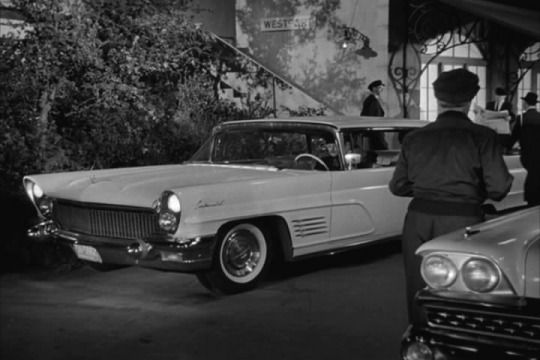
“Lucy and the Mustache” (1960) ~ Disguised as Ernie Kovacs’ chauffeur, Lucy parks outside the Westport train station.

“Lucy Wants a Career” (1959) ~ Lucy and Ricky only see each other at Grand Central Station, one of the most famous train stations ever built. There is establishing footage of Grand Central.
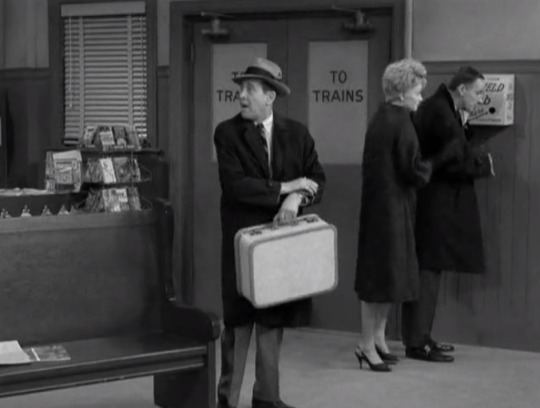
“No More Double Dates” (1962) ~ At the Danfield Train Station, Lucy and Harry narrowly miss Viv and Eddie when trying to have independent dates. When Lucy and Harry lie about missing their train, Eddie notes that the next one only makes one stop - in New Rochelle. The real-life New York town has already been mentioned several times in the series, establishing that Danfield (and nearby Ridgebury) are similar commuter suburbs of Manhattan.

“Lucy Visits the White House” (1963) ~ Lucy gets off the train at the Greenview Station to hunt down sugar cubes to rebuild the cubs’ sugar cube White House.
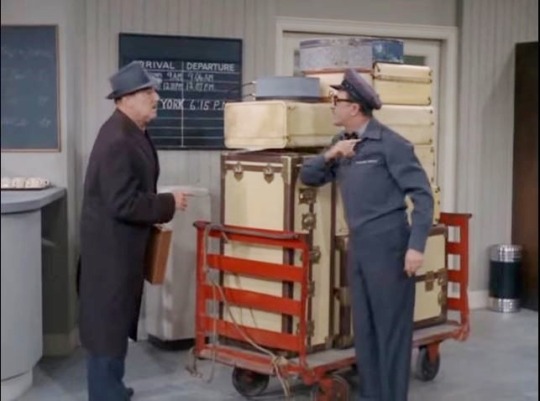
“Lucy is a Process Server” (1964) ~ Charged with serving Mr. Mooney, Lucy tracks him to the Danfield Train Station.

“Main Street U.S.A.” (1967) ~ Lucy and Mr. Mooney arrive in the small town of Bancroft by train.
TOY TRAINS
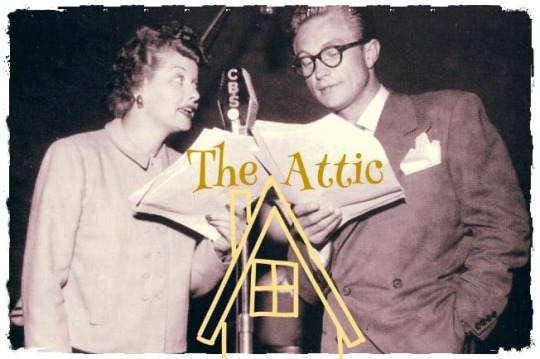
“The Attic” (1949) ~ An episode of Lucille Ball’s radio series in which George and Liz (Lucille Ball) clean out the attic and get locked in.
GEORGE: Hey, look at that! My wonderful electric train. LIZ: Well, I haven't heard you use that tone since you proposed. GEORGE: Oh, gosh, I haven't seen this train in years. LIZ: Well, you certainly have no use for it now. Out it goes. GEORGE: Take your hand off that box! It stays! LIZ: Oh, George, don't be silly! GEORGE: Now, who's being silly? That train doesn't leave this house. LIZ: Now, that's being practical. There's nothing as useful as an electric train. In fact, we should get another one for me. We can race them every night before we go to bed! GEORGE: Yeah. I guess you're right. Out it goes. LIZ: I'll let you keep your train if you let me keep my corsage collection. GEORGE: It's a deal!
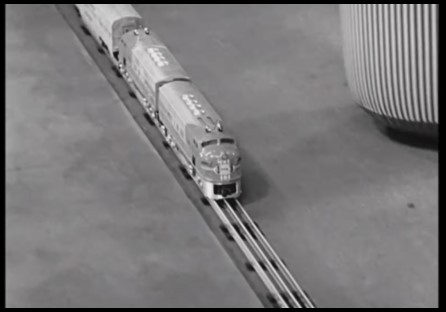
LUCY: “Look out for the Super Chief! Woo Woo!”
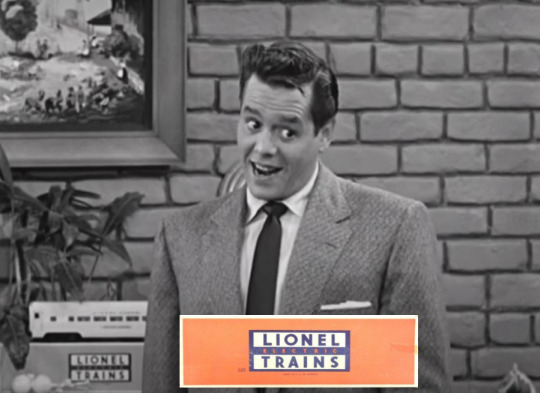
“The Ricardos Change Apartments” (1953) ~ Lucy fills the apartment with Little Ricky’s toys, including a Lionel Electric Train Set, to convince him they need a larger apartment.

“Little Ricky Gets Stage Fright” (1957) ~ Little Ricky is discovered playing with his Keystone Toy Railroad, a wooden train set made by the Keystone Manufacturing Company. The box is tucked under the bed.

“The ‘I Love Lucy’ Christmas Show” (1956) ~ Lionel Trains are under the Christmas tree for Little Ricky.
“My behind-the-scenes memoris are just the toys on the set. The writers, Madelyn and Bob, gave me a Lionel Train set and that was a real big treat for me as a kid.” ~ Keith Thibodeaux (Little Ricky)
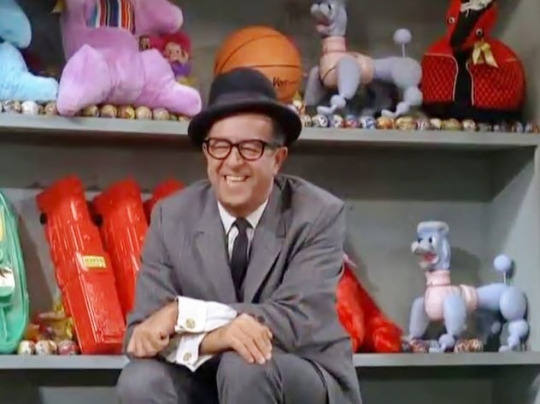
“Lucy and the Efficiency Expert” (1966) ~ Oliver Kasten (Phil Silvers) sits in front of red blow mold locamotives at the Grantland Toy Factory where Lucy is employed on the production line.
THE SUBWAY

“Tennessee Ernie Visits” (1954) ~ Ernie explains the subway.
ERNIE: I asked a fella how to get to the Rickerdos'. Well, he said, "Take the subway." Well, he pointed over there to a hole in the ground with some steps a-going down in it. I went down in there, and do you know what I saw? A bunch of people a-standing there looking in a ditch. Well, here come two streetcars hooked up together. All that bunch of people come a-steamin' up there pushed me through that door, shut it up, and we took off like a scalded gander. Well, sir, we drove and drove and drove and do you know what? RICKY: What? ERNIE: That driver never got that thing out of that hole.
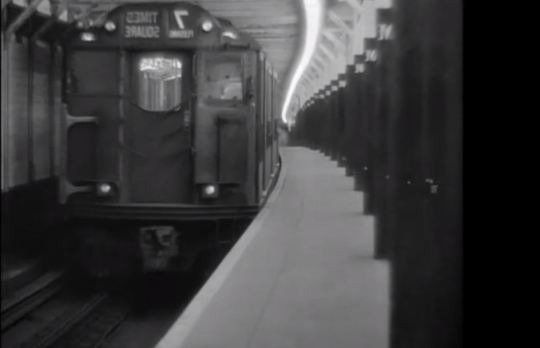
“Lucy and the Loving Cup” (1957) ~ When Lucy gets a loving cup stuck on her head, she must take the subway to Brooklyn to get it off. The episode features establishing footage of the New York Subway trains, although the footage was reversed.
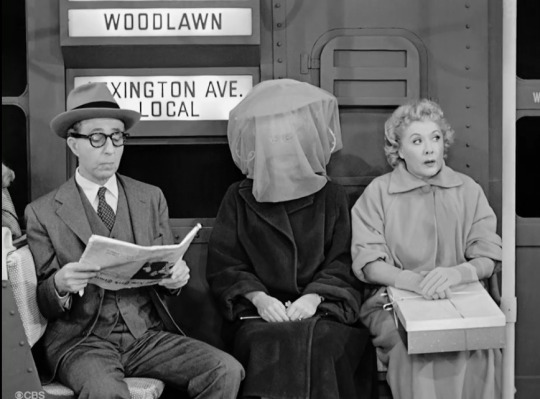
The subway car was recreated on the Desilu soundstage in Hollywood.
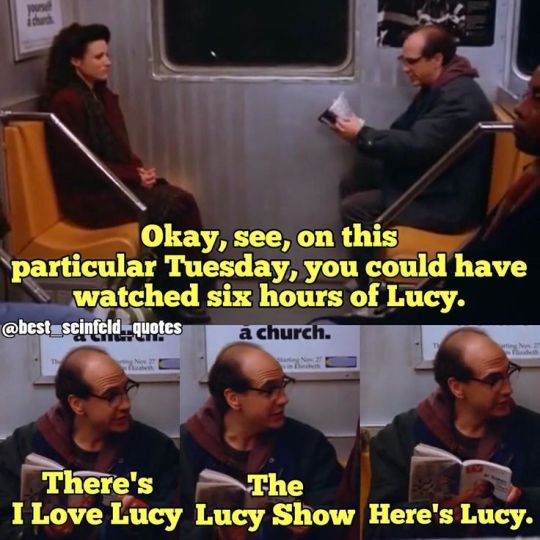
#Train#Locamotive#I Love Lucy#Railroad#Railway#Lucille Ball#Desi Arnaz#Subway#Vivian Vance#William Frawley#Seinfeld#The Lucy Show#Train Station#Grand Central Station#depot#Tennessee Ernie Ford#Phil Silvers#My Favorite Husband#Little Ricky#Keith Thibodeaux#Lionel Trains#Santa Fe Railroad#Union Pacific Railroad#Lady on the Train#Frank Nelson#Gale Gordon#Fred MacMurray#Forever Darling
4 notes
·
View notes
Video
The Tehachapi Loop is a 3,779-foot-long spiral, or helix, on the Union Pacific Railroad Mojave Subdivision through Tehachapi Pass, of the Tehachapi Mountains in Kern County, south-central California. It connects Bakersfield and the San Joaquin Valley to Mojave in the Mojave Desert. The track gains 77 feet in elevation and makes a 1,210-foot-diameter circle. Any train that is at least 3,800 feet long passes over itself going around the loop. The loop was constructed in 1874 by Southern Pacific's civil engineer, William Hood, to keep grades around 2% through the pass.
The Tehachapi Loop is a 1.15 km long spiral, or helix, on the Union Pacific Railroad Mojave Subdivision, through Tehachapi Pass in south-central California. Built by Southern Pacific and opened in 1876, the railway loop looked to ease the grade over the Tehachapi Pass. The Tehachapi railway lines remain open to this day, but they only service freight trains and trains no longer stop there. The Tehachapi Depot Railroad Museum uses a high-definition Dahua SD59225U-HNI camera to capture the passing trains and depot, providing clear audio, wind speed, and temperature. The Loop camera is mounted approximately three-quarters of a mile from the Tehachapi Loop hilltop, offering a gorgeous panorama of the Loop and surrounding areas. The West Cable Cam is located at a residence in the Golden Hills community overlooking the west end of Cable at MP 357.
youtube
The Tehachapi Loop is a 1.17 km long spiral built in 1876 on the Union Pacific Railroad in Kern County, California. That’s one train passing | source
2K notes
·
View notes
Text
Serene Southern Rail Lines Lore
In the early 1880s, a small line of track was constructed south out of Sacramento. Since rail travel was updating as quickly as it was, there turned out to be plenty of old timers and ancients doing less than their fair share, given they were already worn the hell out. This meant that a line running down California's spine would have all the motive power it needed, so long as you didn't need to go faster than about 60 miles per hour and had enough coal to last an eon.
That said, this little upstart going South to admire the Serenity of California's farmland and valley was preserving history, which some roads took a keen interest in, and so, garnering good will with the surrounding mounting behemoths, as well as freight and passenger contracts not worth the time and effort of said railroads, and even some repair jobs on equipment and trackage owned by competitors, the Serenity & Southern Railway, then the Serenity Southern Railroad, and finally the Serene Southern Rail Lines at the turn of the century, was in business.
At the southern mouth of the valley is a town called York, this will be important. That said, the SSRL built down to it, then promptly turned East before realizing that it was still too far north to run out of the valley. It then loosely abandoned this project before again running southmore still, towards San Diego. It reached and passed the border by the turn of the century, now having its main main line constructed, opting to build two more, one south into Baja California and one East towards Texas's border at El Paso New Mexico.
By the '20s, it continued its arrangements as with railroads far and wide to improve, maintain, and in some cases operate their equipment, running trains that would be considered competition with the other railroads in the area if they weren't as helpful as they were. Both wars came and went with little fanfare, war traffic increased, but being one of the secondary routes, it wasn't as notably effected. As dieselization crossed the nation, the Serene Southern opted to not care and continue operating steam from every corner on their metals.
By the '80s, they were the final railroad still operating steam in revenue earning service, having gathered many larger examples from other railroads, as well as experimental designs that could have changed the future. It wasn't to be however, as with all its effort to keep its engines in tip top shape and rising prices on top of less passenger, freight, and mail traffic, the Serene Southern couldn't keep running. Upon its most recent acquisition, its books closed for good. Without the traffic flowing from other railroads and now the other forms of transport, it couldn't survive. It's motive power and remaining rolling stock and trackage was auctioned off to museums and other railroads, leaving quite the collection behind to the best of its abilities, becoming a cautionary tale to some, and a hero's story to others.
0 notes
Photo

Day 16: Union Pacific 844
Information from Wikipedia:
Union Pacific 844, also known as the "Living Legend", is a class "FEF-3" 4-8-4 "Northern" type steam locomotive owned and operated by the Union Pacific Railroad for its heritage fleet. Built in December 1944 by the American Locomotive Company (ALCO) of Schenectady, New York, No. 844 is one of four surviving FEF Series locomotives and the only one in operation.
The locomotive operated in revenue service until 1959. It was stored while awaiting scrapping, along with the rest of the UP steam locomotive fleet. In 1960, railroad leaders recognized the benefits of having a steam program and retained No. 844 for special activities, the kernel of what has become the Union Pacific's heritage fleet. Today, it is one of UP's oldest serving locomotives and the only steam locomotive owned by a North American Class I railroad that has never been retired.
In 1944, Union Pacific and the American Locomotive Company (ALCO) collaborated on the FEF-3, a class of 10 locomotives designed to pull passenger trains at 90 mph. The FEF-3 could reach and regularly run at 120 mph; one locomotive reportedly pulled a 1,000-ton passenger train at 100 mph. All FEF classes were considered by the Union Pacific to be capable of producing between 4,000 and 5,000 drawbar horsepower.
The FEF-3 class represented the apex of dual-service steam locomotive development; funds and research were being concentrated into the development of diesel-electric locomotives. Originally designed to burn coal, they were converted to run on fuel oil in 1946. Like the earlier FEF-1 and FEF-2 classes, the FEF-3 locomotives were ultimately reassigned to freight service.
UP 844 was the last steam locomotive delivered to the Union Pacific Railroad, constructed as a member of the FEF-3 class of 4-8-4 "Northern" type locomotives. Upon its entry into service, the locomotive spent most of its career pulling a variety of passenger trains, such as the Overland Limited, Los Angeles Limited, Portland Rose and Challenger. From 1957 to 1959, UP 844 was reassigned to fast freight service in Nebraska when diesel-electric locomotives took over passenger service.
After commercial steam operations ended in 1959, the 844 and the rest of the FEF-3 class was placed into storage. Saved from scrapping in 1960, No. 844 was chosen for rebuilding and is now used on company and public excursion trains, along with hauling revenue freight trains during ferry moves.
Since 1960, No. 844 has run hundreds of thousands of miles as Union Pacific's publicity locomotive. The locomotive often pulled the annual Denver Post-sponsored Cheyenne Frontier Days train that ran round-trip from Cheyenne to Denver every July before it was discontinued in early 2019.
It appeared at Expo '74 in Spokane, Washington; the 1978 dedication of the Utah State Railroad Museum in Ogden, Utah; the 1984 World's Fair in New Orleans; and the 50th anniversary celebration of Los Angeles Union Passenger Terminal in 1989, when it performed a side-by-side run with Southern Pacific 4449. On February 14, 1975, it pulled Amtrak's San Francisco Zephyr from Denver, Colorado to Cheyenne, Wyoming with a pair of EMD SDP40Fs. In 1981, it traveled to the opening of the California State Railroad Museum in Sacramento, along with Union Pacific 3985, which had recently been restored to operational condition.
Over the weekend of October 14, 1990, No. 844 led a procession of special trains from Kansas City Union Station to Abilene, Kansas for World War II veterans to celebrate the 100th birthday of U.S. President Dwight D. Eisenhower. The "Eisenhower Centennial Special" was composed of cars from the Union Pacific, Burlington Northern and Santa Fe Railway business fleets, with additional passenger cars provided by the Norfolk Southern and Chicago and North Western railroads. Also present in Abilene was General Eisenhower's command train, code-named "Bayonet", including the British A4 steam locomotive No. 60008 and communication and staff cars from WWII's European Theater of Operations.
After the end of the 1991 excursion season, 844 was put in the shop for a major running gear overhaul in addition to other repairs. During that time, 844 was repainted from the passenger greyhound scheme to the freight black. It emerged from the shop in 1996.
On June 21, 1997, on the way to the National Railway Historical Society (NRHS)'s annual convention in Salt Lake City, Utah, 844 and Union Pacific's Executive E units pulled 18 passenger cars on the Union Pacific's soon-to-close Tennessee Pass line, which included tracks on a narrow canyon shelf along the Arkansas River.
On June 24, 1999, while on display during RailFair '99, one of the 844's boiler tubes failed, and the locomotive was subsequently towed dead back to Cheyenne by the recently-overhauled No. 3985. The tube was found to have been made of the wrong material during the overhaul in 1996, a discovery that prompted the replacement of the firebox in a complete overhaul that lasted from September 2001 to 2004. On September 9, 2004, the UP steam crew successfully test-fired the 4-8-4. It returned to operating service on November 10, 2004.
On May 18–19, 2007, No. 844 teamed with Southern Pacific 4449 to pull the "Puget Sound Excursion", a round trip from Tacoma to Everett on BNSF Railway tracks.
On June 25 and 26, 2010, it made an excursion trip to Milliken, Colorado's centennial celebration.
In September 2012, the locomotive was used in "UP 150", a celebration of Union Pacific's 150th anniversary celebration, hosted by the California State Railroad Museum. During that time, it also stopped at Walsenburg, Colorado for a night photo session, parked next to ex-Lake Superior and Ishpeming 2-8-0 “consolidation” 18, which was operated by the Rio Grande Scenic Railroad at the time, before that line was shut down.
In June 2013, the locomotive's gyrating Mars Light, installed in 1946, was removed because its mounting bolts had deteriorated. It was also announced that year that the 844 and 3985 would eventually be joined by a third steam locomotive: Big Boy No. 4014.
After the 2013 season, the locomotive was taken out of service for boiler work required by a change in the water treatment. It spent 2014 in Cheyenne, then received an early 15-year inspection the following year.
On June 16 and 17, 2016, the 844 was test-fired. On July 12, 2016, the Union Pacific Steam Team took the locomotive on a "break-in run" as a sort of all-systems check and dress rehearsal for its return to service. The run was described as a complete success. On July 23, 2016, it pulled the annual Cheyenne Frontiers Day excursion.
On October 13, 2016, the Union Pacific Steam Team started its 18-day "Trek To Tennessee" journey: the restored 844's first major trip.
In April 2017, No. 844 made its first run on the Oregon Short Line Railroad to celebrate the 92nd anniversary of the Boise Union Pacific Depot. Because of heavy snows and a wet spring, the trip was cut short and the engine had to run light across the Malad River because of a washed-out bridge.
In December 2018, Union Pacific requested Federal Railroad Administration (FRA) waivers to exempt UP Nos. 844, 3985 and 4014 from federal Positive Train Control (PTC) requirements in February 2019, the FRA officials responded that such waivers were not needed.
On May 4, 2019, No. 844 participated in the inaugural run of the newly-restored Big Boy No. 4014. The train departed the historic Cheyenne Depot following a christening ceremony for No. 4014. The two locomotives arrived at the Ogden Union Station on May 9 for the city's Heritage Festival. The two locomotives were on display at the station until May 12, when the return trip to Cheyenne began. They arrived at Cheyenne on May 19, concluding the first run of No. 4014 in excursion service.
As of January 2020, Nos. 844 and 4014 are the only two operational UP steam locomotives left on the active roster, following the retirement of No. 3985 from excursion service due to its poor mechanical condition. No. 3985 was eventually donated to the Railroading Heritage of Midwest America on April 28, 2022. However, due to the COVID-19 pandemic in March 2020, UP cancelled all of its 2020 steam excursions and stated that Nos. 844 and 4014 would not operate for the 2020 operating season. UP eventually resumed excursion operations with No. 4014 in August and September 2021. No future excursions have thus far been scheduled for No. 844.
From 1962 to 1989, the locomotive was numbered UP 8444 because the railroad had given the number 844 to an EMD GP30 locomotive. After the GP30 was retired from active service in June 1989, No. 8444 was renumbered back to 844. That GP30 is now owned by Nevada State Railroad Museum in Boulder City, Nevada, and operates periodically at the Nevada Southern Railroad Museum on excursion runs. There is now an EMD SD70ACe on the UP roster numbered 8444.
On July 21, 2018, while pulling the Cheyenne Frontier Days Special to Denver, Colorado, No. 844 struck and killed a pedestrian in Henderson, Colorado. It was reported that the pedestrian was trying to take photos of the train while standing too close to the tracks before she was hit. The train was stopped immediately following the accident.
UP 844 was documented in the 1981 film "Eighty Four Forty Four" by the Union Pacific Railroad. Some of those clips would be later used for the opening and closing credits of the PBS show Shining Time Station, which ran from 1989 until 1995 (including the four hour-long Family Specials).
UP 844 also appears in Extreme Trains in the episode "Steam Train", in which it pulled the Frontier Days special from Denver to Cheyenne.
UP 844 also makes an appearance in the 2nd Episode of the 3rd Season on the TLC TV series, Mostly True Stories?: Urban Legends Revealed.
In the 1990 PBS special Ghost Trains of the Old West, UP 8444, as it was numbered at the time of filming, is seen pulling a Union Pacific diesel locomotive and passenger train through Wyoming.
UP 844 (and several other restored steam locomotives) appear in the music video with the Pat Metheny Group's "Last Train Home".
The 2014 short film "Locomotive Song" features UP 844—particularly its running gear—accompanied by the song of the same name by boogie-woogie pianist Honey Piazza.
models and route by: Trainz-Forge, Auran, and Download Station
#UP#Union Pacific#Union Pacific Railroad#UP 844#Union Pacific 844#844#FEF#FEF-3#UP FEF-3#Union Pacific FEF-3#Steam Locomotive#Trains#Trainz Simulator#Christmas#Advent Calendar#CHristmas 2022 🎄🎅🎁
6 notes
·
View notes
Note
3, 13, and 18 for the ask!
Thank you for the asks my dear spouse!
3. Favorite musical artist / group you started listening to this year? I have you to thank for this one: Maddy Prior and the Carnival Band! Especially this song:
youtube
13. How was your birthday this year? I am not a fan of birthdays, and actively avoid celebrating mine. However! This year I had the great fortune to spend my birthday with my father-in-law, and he took me to three very fun places: the Southern California Railway Museum, lunch at the Bombshelter Bar and Grill, where we watched skydivers, and then the afternoon at March Field Air Museum. A great day!
18. A memorable meal this year? The employee holiday luncheon at my workplace returned this year after a four year absence. It's always a big, fun event, with signature foods like tourtiere, a delicious French-Canadian spice meat pie, and a chocolatey take on the traditional Yule Log dessert.
3 notes
·
View notes
Video
All Aboard! by Michael Nyiri
#Perris#California#Southern California#Riverside County#Orange Empire Railway Museum#trains#railroad
13 notes
·
View notes
Note
📂
What in the HECK happened with Scotsman, Dominion, and Dwight during the Great Gathering?!
(Also, since Dutchess of Hamilton has also been to the US during the 1939 NY World’s Fair, did she get involved?)
Warning - extremely long post below
So, first of all, Duchess of Hamilton never went back to the UK.
Duchess of Hamilton (6229) and Coronation (6220) had their nameplates swapped by the LMS when an engine was sent over to the US. 6229, in the guise of 6220, went to the US.
Streamlined locomotives were all the rage at the time, and railroads practically fell over themselves to get Coronation (as she was now known) onto press trains. The B&O railroad in particular was so impressed with her capabilities that they extended a formal offer of employment to her for service on their streamlined Royal Blue service. The LMS were surprised to get an offer to "purchase" their locomotive, but accepted nonetheless, as it meant a welcome infusion of cash in the dark days during the beginning of WWII.
Coronation fit right in with the Americans, having only been about a year old when she was sent to New York. Following the end of steam traction on the Royal Blue in the late 40s, (the B&O were early adopters of diesels.) she and her B&O coworkers found good employment on the New York Central, where she still runs to this day.
Since then, she's fully "gone native", marrying a J3 Hudson, (yes one of the streamlined ones) adopting both an American accent and three children, and being fully repainted to NYC silver by 1956. Flying Scotsman met her in Albany in 1970, and neither one of them recognized the other.
Actually, most UK expats don't recognize her, to the point where a common interaction is for her to be held up as an example of "look at her, she's integrated well into the US", only for the British engines to say "that's preposterous, she isn't English".
When it's pointed out that she's still obviously an LMS Coronation, the next response is usually screaming.
All that being said, she has no interest to come back to the United Kingdom, and wasn’t asked by the NRM anyways.
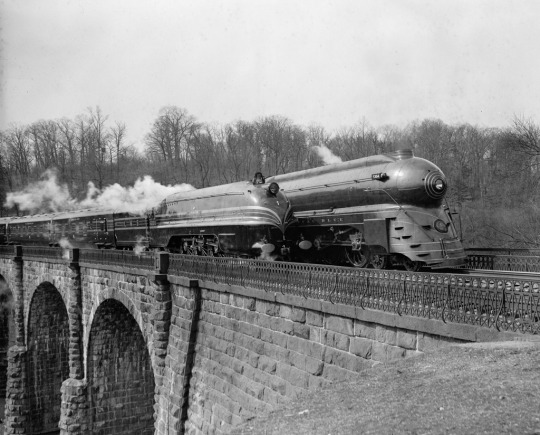
---------------
Second of all, the Great Gathering was... an event.
So, there are (officially) 6 preserved Gresley A4s.
Mallard - static, National Railway Museum (UK). Also an asshole.
Bittern - running, private owner, UK based
Sir Nigel Gresley - running, owned by a trust, UK based
Union of South Africa - running, private owner, UK based
Dwight D. Eisenhower - static (officially), National Railway Museum (USA)
Dominion of Canada - static (officially), Exporail (Montréal)
This is the official list, and for the first 4 engines, it's the truth.
However, things are a bit hazier on the other side of the Atlantic...
-----
So the thing that needs to be made clear right up front that in a sentient vehicle world, museums aren't like the NRM, where locomotives sit static for years on end, although obviously the English have museums like that because of course they do.
Rail museums in the rest of the world are much more like Colonial Williamsburg - a living history center staffed by volunteers who act out a prototypical setting from [insert decade here].
British Rail, being British Rail, didn’t know that and didn’t care.
-
4496, Dwight D. Eisenhower, having been named after the General-turned-President, had been earmarked for preservation by BR, and was summarily shipped off to the US National Railway Museum in Green Bay, Wisconsin.
In an entirely unintentional move, this donation MONUMENTALLY snubbed the Smithsonian, who refused to have any dealings with BR for decades, even for archival purposes. This, combined with the fallout from Operation Smash Hit, and the fact that the Smithsonian is Petty AF, meant that there was virtually no official trans-Atlantic cooperation between British and US museums for decades.
Dwight hit the shores of the US in 1964 New York City and was greeted by a marching band, a ticker-tape parade, and Presidents Johnson and Eisenhower, who were on-hand to personally make the engine a US citizen.
Always keen to curry favor with the government, the Southern Pacific railroad had a job offer waiting for Dwight right alongside the Presidents and the parade, and when he accepted, he went off to Sunny Southern California - someplace so opposed to Britain the he fell in love with the place immediately and refused to leave!
The ladies may have also had something to do with it as well - while most engine classes fell into a typical 50-50 gender distribution, the SP GS-4 class was all female...

[Pictured above - one of 28 very good reasons to live in California if you're a single British steam engine.]
Dwight does not kiss and tell, but at his wedding in 1974, all 28 GS-4s showed up - and he was only marrying one of them!
Since the 70's, he's become a mainstay in California, having been repainted into Daylight Limited colors in 1969, and retiring from railroad duties in 1999. After that, he went into the movie business, and is currently the head of digital media development at Disney.
His wife Irene (SP 4437) is also an interesting figure as well - following in the wheelmarks of the great female locomotives before her, she had an eye for business and a Stanford education before she married her husband, and was an initial investor in multiple tech companies in Silicon Valley during the 70's and 80's, but stopped doing that after her investment in Apple proved very lucrative. In 1996, she was convinced by a few people in the Stanford Alumni association to invest in another tech startup, this one an "internet search engine" called Google.
So yeah, Dwight Eisenhower kept falling up and up and up all his life, and is now married to the richest woman in the world.
--
4489 Dominion of Canada was donated mostly by accident, having been forgotten in the back of Darlington sheds until 1966, when she was shipped off to the Canadian Railway Historical Society in Montreal.
As stated elsewhere, the Canadian Government considered any locomotive built in the UK to have UK citizenship, and therefore treated them as commonwealth citizens under existing Canadian law. (remember that Canada was still a colony at that time)
CN, the national rail carrier, was obligated to offer her a job under their charter, and she accepted, moving to Toronto to run intercity trains between Toronto, Montreal, and Ottawa.
Within two years she was displaced from those duties by the introduction of a new, shiny, jet turbine powered train, and was summarily demoted to local commuter runs in the Toronto suburbs.
Moving to suburbia did one thing more than anything else - expose her to the people who live there. They all had complaints, they all had problems, and they all had no idea on how to fix them.
Being a helpful sort, Dominion decided that she could help, and promptly ran for Toronto city council in 1974. She won, and has been a fixture in local Toronto politics ever since - she even got to be Chairwoman of Metro Toronto (the closest thing to being mayor because Toronto's governmental structure is weird) until 1998, when Toronto was merged with the surrounding area to create a massive new region.
Having then done everything there is to do in municipal Toronto government, Dominion went on to become the Chief Executive Officer of Metrolinx, the agency that controls almost all of the transit agencies in Ontario, because, as she puts it, "I'm still a commuter engine at heart".
She's now painted in the current GO Transit paint scheme, and still does commuter runs- which is really weird looking now that there are double deck commuter coaches in a push-pull configuration, with a Gresley A4 doing the pushing.
------
Now, I mentioned that those 6 were the only ones officially preserved - there were two unofficial preservations as well...
-
4486 Merlin was properly Shanghied - he was yanked off the docks in Southhampton by a cargo ship in August of 1965, and was spirited away to parts unknown.
Those unknown parts turned out to be South Korea. There, he was given citizenship by the US-aligned military dictatorship (Korean history is wild) and was employed by the State-run rail operator.
As the military government began a hardcore plan to increase their country's wealth and industrial output, rail lines were being built across the country, and Merlin was soon awarded a position on the fastest train in the network, the Seoul-Busan Saemaeul-ho.
Because of his experience in running high-speed express trains, Merlin not only became the public face of Korean high-speed rail, but also became an "honored elder" amongst the other Korean engines, a position he still holds to this day - as despite being over 70 years old, he still runs daily trains on the fast services, easily keeping time with the Korean schedules as well as training the new high speed trains, including the KTX sets. He's on his 24th boiler by now, and has more parts from Hyundai than Doncaster.
An additional fact - Merlin actually has had a linguistic effect on Korean railroading, as his strange amalgamation of an accent - a strong Yorkshire accent that tried to be Received Pronunciation for 30 years, mixed with almost 50 years of middle-to-upper-class Korean - has filtered down through the ranks of KoRail, because all of his students want to sound like him out of respect. Human British expats in Korea will occasionally hear a locomotive speaking in English, and the engine will sound like a Yorkshireman every time and the Brits cannot handle it.
---------
4495 Golden Fleece is the only A4 to preserve himself - he saw the writing on the wall in the early 60s, and hopped a car ferry to France at the end of 1962. From there, he bounced around Europe for a bit before making it to the United States in the late 70's.
Of the 8 surviving A4s, he's probably led the quietest life of all - he moved to Miami before it got nice, and basically got in on the ground floor of CSX when that merger happened in 1980. He's now the head of terminal operations for the Port of Miami, but he's generally kept a low profile - not even having a chance to meet Scotsman due to his time in Europe.
He's still in contact with Dwight and Dominion, and has no real bitterness over not being "famous" like they are - he likes the quiet, and still lives in a modest house in Boynton Beach with his long-term girlfriend.
----------------------
Soooo... the Great Gathering.
It was supposed to be a meeting of the 6 surviving A4s - a two year event held at the NRM in honor of the 75th anniversary of Mallard's record-setting run.
"Record setting" is a past-tense term here. While there have been no official runs, every single one of the Pennsylvania Railroad's T1 and S1 locomotives claim to have gone faster than 126 without meaning to, and numerous other locomotives on unofficial attempts done late at night on flat stretches of land across the country have hit 130+.
British Expats have also done better than 126 - Coronation claims to have hit at least 140 on a midnight mail train in 1980, and in Korea, Merlin claims to have hit 128 on a test train, although that was judged by timing mile markers as his speedometer wasn't functioning properly.
Problems arose before any of the engines had even reached the NRM, as Mallard's already sizeable ego had swelled to massive proportions, and several engines in the great hall were planning a justifiable homicide.
Then came the time restraints - none of the foreign locomotives were willing to uproot their lives and jobs for two years just to sit motionless in a shed. A two year exhibition was eventually negotiated down to a 6 month gala, much to the irritation and confusion of the NRM, who could not understand that the engines were still in service.
Then came the extra engines - Dwight and Dominion thought that the NRM knew about Fleece, and were quite insulted on his behalf when he wasn't invited - they threatened to not attend unless arrangements were made for Fleece to attend as well.
An utterly baffled NRM agreed, but also tore their record archives apart, as they knew that Fleece had been scrapped. The fact that his picture was plastered all over CSX's Florida Division website was all the more confusing as a result.
-
Meanwhile in Busan, nobody knew that Merlin had escaped the scrappers' torch and therefore did not invite him. He was only informed after K-Pop star Psy texted him from London to ask if he knew about the event, which was being advertised on television.
Merlin, having missed his friends from the LNER, decided that he would just crash the party, used some of his many vacation days, and took off for England on a cargo ship.
-
By sheer coincidence, all four foreign A4s hit the dock in Southhampton on the same day, and were delighted to see each other - especially Merlin, considering that everyone else had thought he'd died.
Meanwhile at the NRM, delight was not the word one would use. Befuddled, confused, shocked even, but not delighted. Their plans had revolved around 6 A4s, most of which wouldn’t be running - only to now discover that there were 7, all but one of which were functioning! (Mallard, the star of the show, was the odd one out, and it drove him crazy)
Then they got a phone call from their man at the docks saying that another one had showed up, looking like he’d driven out of a K-pop album cover, and they just gave up and started screaming.
-
Screaming is also what happened when the cavalcade of foreigners showed up in York - first of all, the quartet of new engines sounded nothing like they had when they left England.
Dwight had willfully unlearned his Upper Crust British accent by 1971, and had fallen deep into a California accent (quite similar to what Scotsman sounds like - coincidence? No.)
Dominion and Fleece hadn’t tried to unlearn their accents, but 40+ years of living in North America can really dilute the Britishness. It doesn’t help that Dominion has developed most Canadian vocal tics eh?
As stated above, Merlin has a weird fuckin accent, and now he speaks English with a strong Yorkshire accent, but will occasionally and without warning drop into a Korean/Yorkshire hybrid accent.
The screaming also happened because the NRM had wanted to repaint the duo trio! quartet?! into LNER garter blue, and were promptly informed that “we’re painted like this for work! Don’t touch it!” (the sole exception was Dwight, who hadn’t pulled a real train in 14 years, but he liked his Daylight Limited paint), so instead of the new arrivals showing up in LNER colours, they showed up looking like THIS:

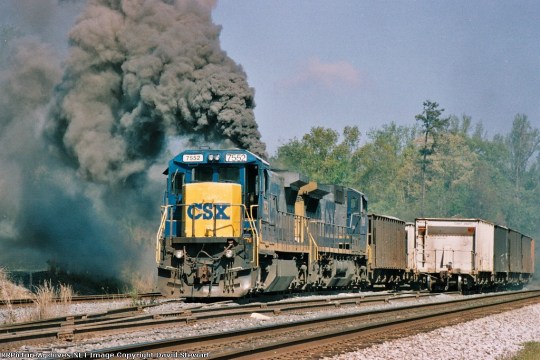
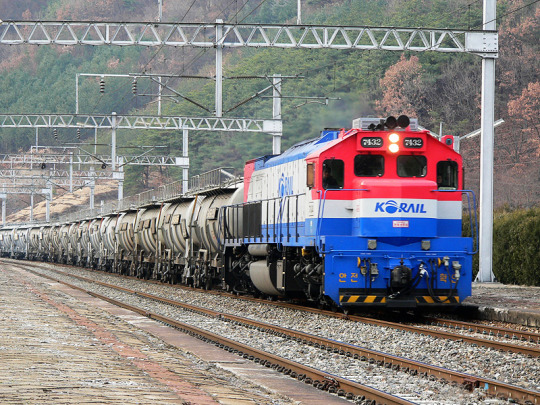
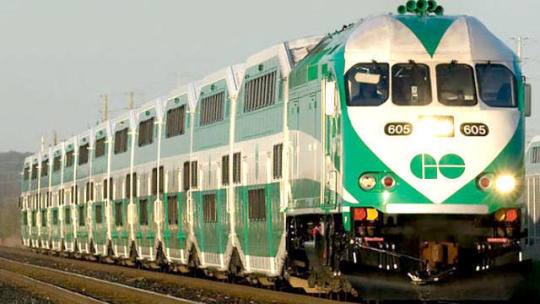
Having their long-lost siblings show up looking and sounding like THAT had quite an affect on the A4s and the other NRM engines:
Bittern could not believe her eyes - to the point where she actually began making noise about seeing an optometrist
Union of South Africa almost backed through a wall
Sir Nigel Gresley was speechless for two days
Mallard was so angry that he actually chipped a tooth during one of his rants about “the impropriety of it all!!”
Evening Star laughed so hard that he managed to derail himself without moving
City of Truro almost cracked a piston from shock
Alycidon spent the entire gala coming up with more and more laser focused jabs at Mallard - who was so easy to fluster that the Deltic needn’t have bothered
Oliver Cromwell and Green Arrow made fast friends with the new arrivals, and spent the entire time learning ‘Americanisms’ to annoy the other engines with.
But what about Flying Scotsman? Where was he in all of this? He was generally considered to be the “leader” of the NRM fleet (much to Mallard’s annoyance), and was usually who the other engines turned to when things started getting out of control.
Did Scotsman calm things down? Like hell he did. The inmates were running the asylum from the moment that Scotsman saw the other A4s - more importantly saw Dwight - and immediately greeted them in flawless Californian.
This actually set off the building’s security alarm, as Flying Scotsman saying “DUDES! Wassup?!” caused such an uproar that the noise broke several exterior windows.
----
And all of this was in the first few days - there were six months left to go.
--
There was one railtour attempt. It was supposed to feature Bittern and Sir Nigel running in tandem, but instead featured Dwight and Merlin, mainly because Bittern wanted to see what would happen.
They exceeded the max speed limit for steam traction within 15 minutes, sparked a thorough investigation by the RAIB, and got all future steam powered railtours for the Gathering cancelled immediately.
On the plus side, the two engines did prove that it was still possible for a steam train to hit 100 safely.
--
One thing that baffled the other engines was the inordinately large number of people who turned up just to see Dominion, and the one person who kept turning up to see Fleece - it took a lot of explaining for them to understand that Dominion had been married three times, and had children (adopted) and grandchildren from all three marriages coming to see her. A similar amount of explaining was required to explain that Fleece’s girlfriend/partner wanted to see him too.
The normally chatty Dwight and Scotsman would suddenly clam up whenever Dominion and Fleece teasingly tried to ask about their love lives, something which wasn’t unnoticed by the other engines, but got similarly nowhere.
The answer to why they both shut the hell up was explained when a lot of shouting broke out in the yard of the NRM one day about a month into the exhibition:
Irene Eisenhower, not content to sit in California and count her billions, quickly grew bored without her husband, and decided to go to England and be with him. The fact that she definitely did not fit the UK loading gauge was never even a consideration, and so she just showed up in York on the back of a lorry, having informed no-one of her arrival, and content to just pay off the requisite people if a fuss occurred.
A fuss did occur, and it was only ended when Scotsman managed to convince the museum’s curator (who at this point in his life was regretting ever thinking of this damned gathering) that Irene was a ‘temporary donation’ to the museum.
[Scotsman, who definitely hid his Cali accent from museum staff the entire time, has one of the best poker faces in the world]
Dwight was overjoyed, and so was Scotsman, for initially unclear reasons. Then Irene managed to grab both her husband and Scotsman, dragged them behind a shed, and [THIS IS A PG13 HEADCANON] the both of [PG13]. Turns out that while Scotsman may have slept his way across the US a few times, he was actually ready to settle down with Dwight and Irene - they were a throuple way back in the 70s, and those passions haven’t faded. When Scotsman reluctantly left the US in 74, a lot of the reluctance was because of those two.
This bombshell of a revelation went over interestingly at the NRM. Some engines (Green Arrow) were happy for them, some were incensed (Mallard - although it was for anti-American reasons, not homophobic ones), and some were intensely curious about what was going on in the outside world (Bittern).
-
The ‘foreigners’ (as Mallard had taken to calling them), were deeply displeased at how their fellow engines were being treated - while a lot of them were ‘in steam’, some were not and might never be again, something they found abhorrent. Unable to do anything at that time, as the NRM was not a for-profit entity and therefore did not have anyone to bribe, (Irene’s solution to things is to throw money at the situation) the engines started talking about how life was different in the outside world - namely that engines were still working hard, even when they were over a century old and running on steam power.
This was of great interest to engines like Evening Star and (6220) Duchess of Hamilton, neither of whom were likely to be steamed again, and Bittern, who was growing more and more curious with each passing day. Dissent began to slowly build against the NRM curators, and the culture of the United Kingdom in general.
-
One thing the foreigners did try do something about was Ellerman Lines. The poor bastard had been sectioned to show his inner workings, much to the jaw-dropped horror of the foreign A4s, who made such a stink about it that he was moved outside the museum by NRM staff, who must have thought that the engines lacked object permanence or something, because that didn’t make it better!
-
Irene Eisenhower, who was beginning to get really sick of the nonsense that the NRM called preservation, (Scotsman was not in running condition, and had been hastily reassembled mid-overhaul in order to be cosmetically ready for the event, and let’s not forget poor Ellerman Lines) elected to bring the event to a close on her own after only three months. She did this by eventually putting her immense wealth to good use, and called for a haulage service to rescue the engines from the NRM without the knowledge of the museum staff. Aside from the A4s, she also took Ellerman Lines, Scotsman, and Bittern (who had asked to go) with her, and only bothered to inform Ellerman and Bittern - she was not about risk Scotsman having another “think of England” moment and staying.
The haulage firm was efficient and the cargo ship was waiting, so the engines were in international waters before the NRM opened the next morning.
Much swearing occurred in England that day, and the NRM’s image has yet to fully recover from the PR story that they had sold Flying Scotsman (and Ellerman Lines) to a reclusive American billionaire.
Privately though, the NRM does not care, as that story is a lot better than “Someone stole our engines and we’re not allowed to get them back because as it turns out we’re slaveowners, so no international court will help us.”
Also, despite their multimillion dollar “donation" from the I. Eisenhower Opportunity Fund, they still haven’t been able to fully pacify their engines, all of whom have somehow gotten the idea that they should be running in main line service like they live on Sodor or something...
--------
Dwight, Scotsman, and Irene all live happily together in the sprawling Eisenhower estate in Malibu. Irene is currently lobbying the California state government to legalize polygamy, with moderate success.
-
Ellerman Lines, after a lot of therapy and a full rebuild, is now working on a short line in Wyoming. He likes the scenery.
-
Bittern followed Dwight, Irene, and Scotsman to Los Angeles, and used her ‘connections’ (Dwight) to get a supporting role in Avengers: Age of Ultron. Since then, she’s gotten several roles based on her own merits, including an Emmy nomination for Best Guest Appearance in a Comedy.
-
Merlin spent a few months in LA before he went back to Korea. He is very thankful that he was able to reconnect with his brothers and sisters, and that his homeland has good internet, as he video calls his family across the Pacific almost every day.
-
Golden Fleece still lives a quiet life in Florida, but finally decided to tie the knot, and married his girlfriend in 2017. The ceremony was supposed to be quiet, but Irene Eisenhower has no idea what that word means.
-
Dominion of Canada continues to baffle non-local trainspotters when she runs commuter trains into Toronto. She is now a great-grandmother.
-
7 years later, and the term “Great Gathering” is still a forbidden phrase in the back rooms of the NRM.
#ask response#long#really long#I wrote this for like me and two other people at most#national railway museum#flying scotsman#Headcanon#ttte#ttte adjacent#bittern#mallard#train headcanon#locomotive rights headcanon#extremely specific headcanon#headcanon
62 notes
·
View notes
Text

Tracks
#railroad tracks#sepia#Southern California Railway Museum#Perris#riverside county#california#photo#digital#original photographers
4 notes
·
View notes
Video
#black and white#southern california railway museum#abstract landscape#tidewater#puddle#rain#water#lake#pond#hills#rough#cover#flat car#sandbar#island#detail#abstract#flickr
4 notes
·
View notes
Video
Late afternoon in Laws por Kevin Madore Por Flickr: Southern Pacific 10-wheeler #18 sits at the south end of the little railroad yard in Laws, California, at the end of a sparking March day, awaiting her next call to duty. The scenery in Laws is pretty hard to beat. The chocolate brown mountains with their caps of snow tower above both sides of the Owens River Valley. Pieces of historic, Southern Pacific Railroad infrastructure dot the landscape in the foreground.....and there is just the right amount of miscellaneous clutter to give the yard that operational feel. This image was created during a March, 2023 photo shoot at the Laws Museum, near Bishop, CA, featuring Southern Pacific Locomotive #18 from the Carson & Colorado Railway in Independence, CA.
24 notes
·
View notes
Photo
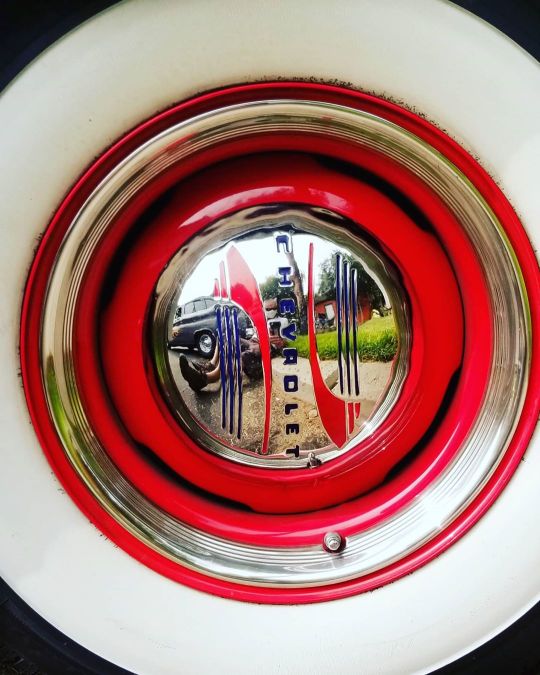
CHEVROLET #2020antiquetruckshow #classictrucks #socalrailwaymuseum #hubcaps (at Southern California Railway Museum) https://www.instagram.com/p/CFV7cPwJiFv/?igshid=19rp2xrwynjug
18 notes
·
View notes
Video
Union Pacific Engine 2564 by kimpossible pics Via Flickr: Union Pacific steam engine 2564 at the Southern California Railway Museum, Perris CA
3 notes
·
View notes


